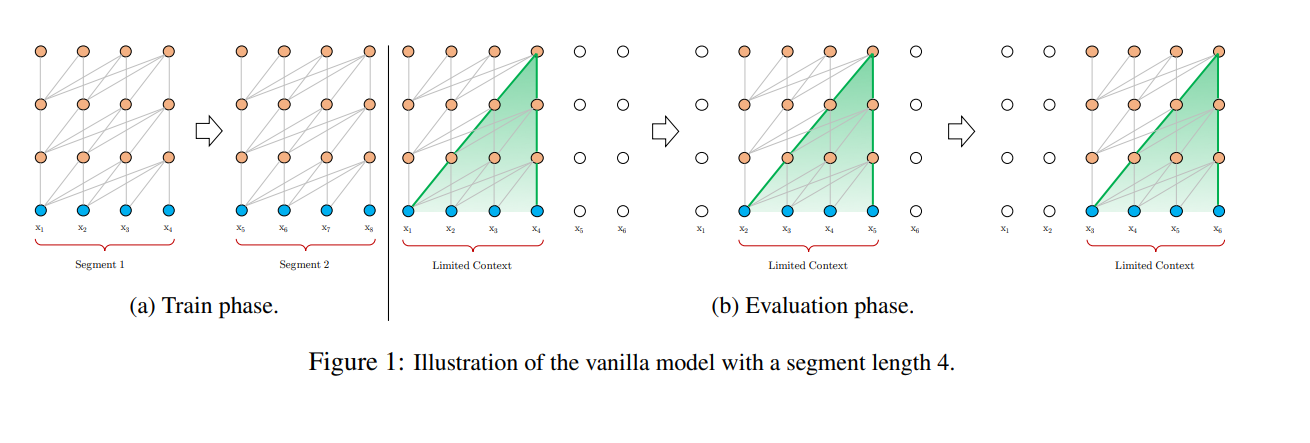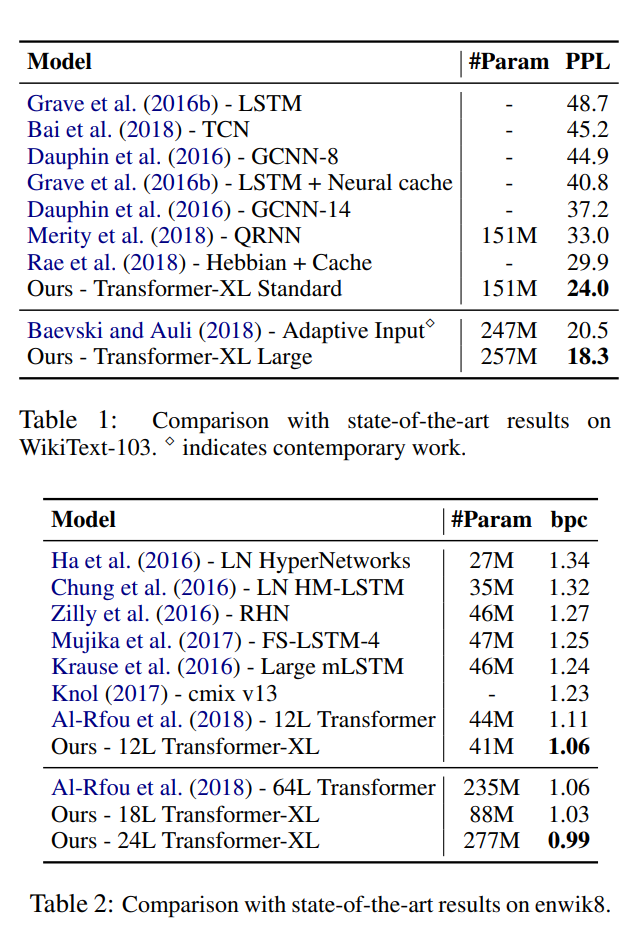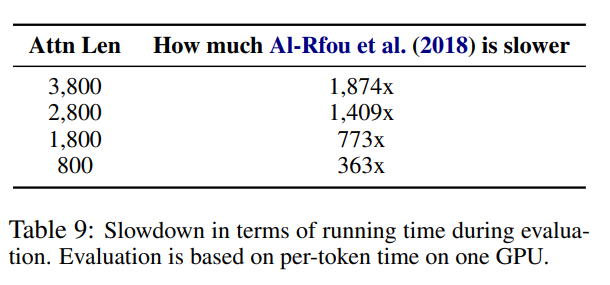| author: | slycane9 |
| score: | 9 / 10 |
Core Idea
For language modeling, regular RNN and LSTM transformers of the time struggled with a concept called context fragmentation. This phenomenon occured when fixed length segments caused sentence boundaries to be ignored and thus created a model that struggled to generate the initial symbols of a sentence.
The authors developed a new Transformer-XL (Xtra-Long) model to address context fragmentation with two core features.
Implementation
First, Transformer-XL used Segment-Level Recurrence and State Reuse to avoid fixed length context segments. This is done by storing the hidden state of a segment not just for the next segment, but also for future segments afterwards. This gives the model a sense of extended “history” as segment dependencies reach farther into future segments. Technically, this is realized with a recurrence mechanism that links two segments together and propgates their hidden states throughout the layer.
Below we can see the difference in segment connections between regular Transformers and Transformer-XL.


Advantages of this change are two-fold.
- First, having a model of longer-term dependancy avoids context fragmentation, a problem experienced by prior transformers on this task.
- Second, the recursive nature of the model allows faster training as information in previous segments can be easily accessed in later segments.
The second feature of Transformer-XL, which is necesary to achieve the benefits of the first Segment-Level Recurrence feature, is the introduction of Relative Positional Encodings. In order to facilitate the re-use of prior segments, temporal bias is defined relatively in this method, rather than statistically. Relative positional encodings thus further facilitates the previously mentioned advantages of Segment-Level Recurrence.
Performance
In terms of how Transformer-XL performs, results showed that it outperforms state-of-the-art models in both perplexity and bits per character.
Below we can see in Table 2 that Transformer-XL was the first to break 1.0 bit per character on the enwiki8 dataset, a notable achievement for the time. Also in Table 1 we can see that Transformer-XL has reduced perplexity to SoTA with a comparable parameter count.

Next we look at Relative Effective Conext Length (RECL), which measures the longest length of context that causes a gain across a threshold. Transformer-XL achieved context lengths 80% longer than RNNs and 450% longer than transformers, meaning Transformer-XL is empirically able to better capture longer-term dependency.
Finally, Transformer-XL also took less time to evaluate than the state-of-the-art language models.

TL;DR
- Prior language model Transformers suffer from fixed-length context and context fragmentation.
- Transformer-XL avoids this using Segment-Level Recurrence and Relative Positional Encodings for longer-term dependencies.
- Transformer-XL outperforms state-of-the-art in perplexity, bits per character, context length, and validation time.